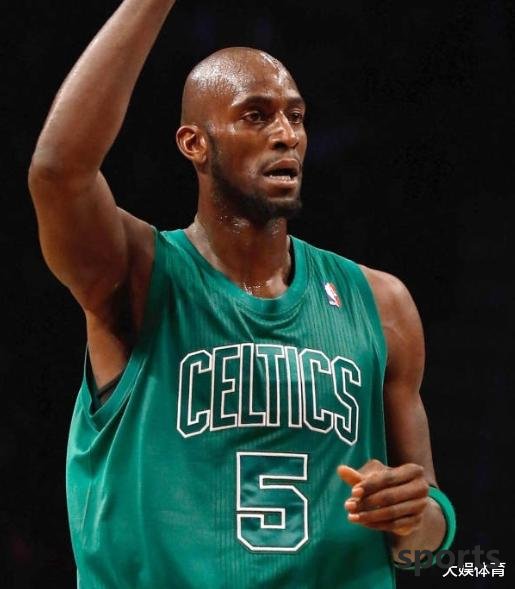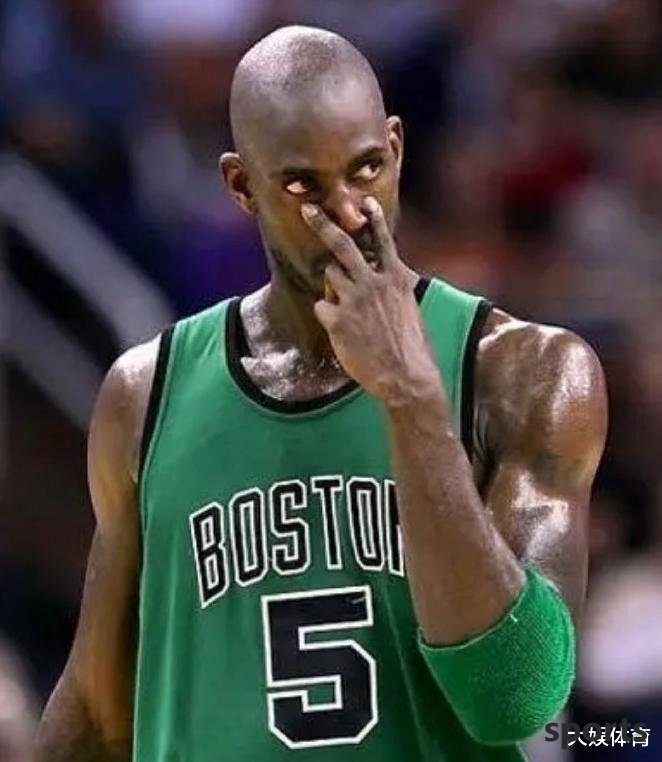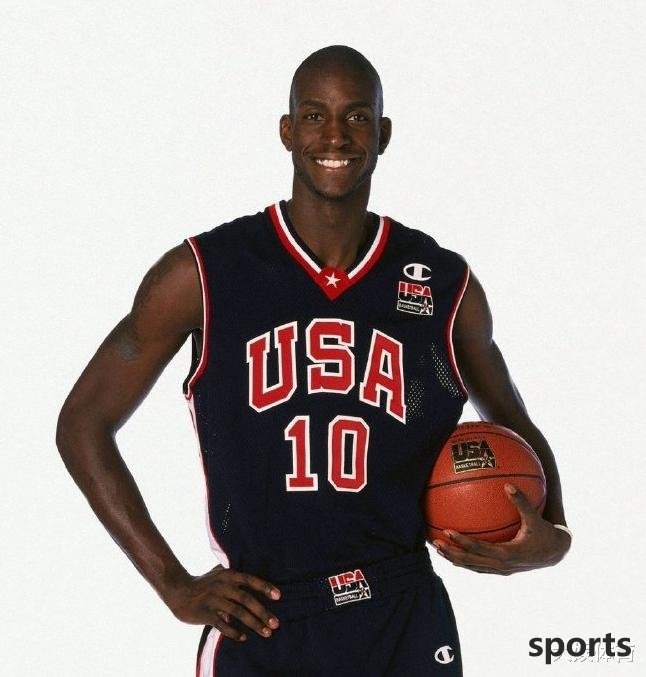Garnett has a very talented person, why is he only the fifth pick in his debut? Because he debuted as a high school student
8:43am, 27 July 2025Basketball
On July 25, at the 1995 NBA Draft, Kevin Garnett was selected by the Minnesota Timberwolves with the fifth pick, which caused quite a lot of controversy at the time. Garnett, who is 2.11 meters tall and 2.24 meters tall, has an enviable physical talent. His athletic ability, coordination and basketball IQ are far superior to his peers, but why did such a talented player not become the No. 1 pick? Behind this is a multitude of factors such as the general doubts of NBA teams about high school players in the 1990s, the conservativeness of draft strategies, and the immaturity of Garnett's own skills.
**The "original sin" of high school players: prejudice under the limitations of the times**
In 1995 when Garnett participated in the draft, the NBA team's attitude towards high school players was far less than that of the later opening. Although high school skippers such as Moses Malone and Sean Camp have proved their value, most team management still believes that high school students lack tactical literacy and game experience and need longer to adapt to the professional league. Elgin Baylor, then general manager of the Clippers, once bluntly stated: "We cannot use the No. 1 pick to bet a kid who has only played in high school games." This bias directly affected Garnett's draft market - the Warriors, who held the No. 1 pick, finally chose mature inside Joe Smith from the University of Maryland, while No. 1 pick, Antonio McDyce and Tanhua show, Jerry Starkhouse are both NCAA star players.

Garnett's trial performance was actually shocking enough. "He easily beat all college players during his trial in Chicago, even some NBA active players," recalled Kevin McHale, the Timberwolves vice president. But the team is more worried about whether his weight (only 99 kg at the time) can withstand NBA-level confrontation and whether his overly comprehensive technology will lead to blurred positioning. The NBA in the 1990s preferred traditional insiders with clear functions, while Garnett was able to break through the frame and organize and support the style, which instead made the scout report write down the question of "the position on the field needs to be determined."
**Technical shortcomings and competitive environment: Undervalued potential stocks**
Despite their talent, 18-year-old Garnett does have obvious flaws. His shooting stability is insufficient, especially his mid-range shooting percentage is only about 35%. Although his defensive movements are excellent, his position awareness and rebound prediction are far from reaching the NBA level. In contrast, No. 1 pick Joe Smith averaged 20 points and 10 rebounds in college, and Tanhua Starkhouse entered the league with the title of "Jordan's successor". 76ers scout Jack McMahon's evaluation is quite representative: "Garnett is like a piece of rough jade that needs to be carved, but teams with the top five picks usually want to fight immediately."

The draft environment that year also amplified Garnett's risks. 1995 was on the eve of the NBA salary cap reform, and the team was more inclined to choose big-name NCAA players who could contribute immediately to the box office. No. 1 McDyce was already an All-American member at the University of Alabama, and No. 4 pick Rashid Wallace led North Carolina to the NCAA Final Four. The business value of these "finished" players is obviously higher than that of high school students who have not yet proved themselves. Pistons general manager Jack McClosky even admitted: "We dare not put our hope of revival on a child."
**Timberwolves' gamble: Reconstruction of the value of the fifth pick**
History proves that the Timberwolves' choice of Garnett with the fifth pick is a decision that changes the team's fate. At that time, General Manager Philip Sanders took a fancy to Garnett's plasticity: "His learning ability is like a sponge, and we believe he will surpass all his peers within two years." The Timberwolves' patience training strategy has achieved miraculous results - Garnett averaged 10.4 points and 6.3 rebounds per game in the rookie season, and doubled the data in the second season to 17 points and 8 rebounds. By the 1999-00 season, he became an MVP candidate with 24.2 points, 13.9 rebounds and 5 assists.

In contrast, the development trajectory of the top four picks: Joe Smith was only a role player throughout his career, Starkhouse never reached the expected height, although McDyce and Wallace were selected as All-Stars, their influence was far less than Garnett. When Garnett led the Timberwolves to the Western Conference Finals and won the regular season MVP in 2004, all the top four picks in 1995 had become supporting roles. NBA legend Charles Barkley later commented: "If the 1995 draft was reordered, Garnett would be the undisputed No. 1 pick, but no one dared to choose this at that time."
**Turning point of the era: How Garnett reshapes the draft logic**
Garnett's success objectively promoted the NBA's re-evaluation of high school players. In 1996, Kobe was selected in the 13th overall pick, but after Tim Duncan became the No. 1 pick in 1997, the league gradually formed a draft philosophy of "talent first". LeBron James was elected No. 1 as a high school student in 2003, which marked that the team's management completely abandoned the conservative thinking of the past. Garnett himself reflected in an interview: "We (high school players) need to work twice as hard as breaking prejudice, but this is also a source of motivation."
From a deeper perspective, Garnett's case reveals the eternal game between "potential" and "immediate combat power" in professional sports. His story is not only a legend of personal counterattack, but also a reference template for latecomers such as Dwight Howard and Kevin Durant. When the NBA banned high school students from running directly in 2016, Garnett publicly opposed: "Some geniuses don't need college basketball to prove themselves." This sentence may be the best annotation for his fifth pick that year.
Looking back at the 1995 draft night, Garnett shook hands with CEO David Stern in a Timberwolves mare hat, which now looks more like a metaphor for a new era. The boy who was "missed" by the first four teams finally completed the ultimate subversion of draft logic with his 21-year career, 15 All-Stars, 1 championship and the title of "the most all-round power forward in history".
Related Posts
- The sun is dazzling and windy in Doha, Qatar, and the national table tennis team members are wrinkled when they are trained up and down.
- Extremely poor performance! The former Nuggets champion member was simply beaten by the Chinese team?
- Why did Zion fall to the point where he couldn t sell it?
- Rockets are crazy during the offseason! 12 magical operations to win the championship, and the western landscape changes dramatically
- The NBA adds Chinese elements!
- The first place in the Eastern Conference is just a decoration. It takes stock of the playoff record of the first place in the Eastern Conference in the past 10 years, and only two teams entered the f
- The Suns tried out Belmont s senior four forward line, and his all-around ability on the offensive end is quite outstanding?
- Extraordinary achievements in basketball history: The only three legendary stars who won FMVP in different teams
- Suns new head coach Ott is an old acquaintance of the team s boss, and the two sides will reach a four-year contract
